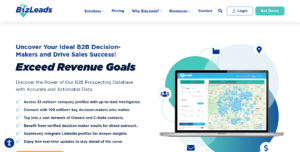Top 11 Fundamental Principles of Great UX Design
- 1 Now let’s explore the top 11 fundamental principles of a great UX design.
- 1.1 Focusing on users’ needs
- 1.2 Consistency
- 1.3 Accessibility
- 1.4 Interactivity
- 1.5 Wireframing
- 1.6 Context
- 1.7 Simple navigation
- 1.8 Multidirectional layouts
- 1.9 Creative Animations
- 1.10 Constant feedbacks
- 1.11 User control
- 1.11.1 Conclusion
UX design plays a vital role in the web designing process that enables customers to easily interact with your product. The fundamental principles of UX are the steps that are integrated while designing a UX. Every UX designer must follow and practice the fundamental principles to design the finest UX which provides a seamless experience to users. Fundamental principles are the steps of designing a UX including user requirements, consistency, performance, hierarchy, style, context, etc. These are the most common fundamental principles that lead towards creating a great UX design.
Businesses can build a strong customer base and increase their customer retention rate by creating an exceptional UX design. As users always like interacting with a product that is designed according to their needs and requirements. Every UX designer must cater to the user’s requirement because it’s the foremost and most crucial principle of UX design. According to the Forrester Research Report, a great user experience can boost up the conversion rate by 400%.
Now let’s explore the top 11 fundamental principles of a great UX design.
-
Focusing on users’ needs
A great UX experience comes when the UX design is fulfilling the users’ requirements. It’s essential to have a clear understanding of what are the problems that your user is facing with your product. Define and discuss the problems with the UX team to generate new ideas and techniques. Prototype testing is the best way to interact with your users which will help you in making amendments according to your user’s behavior. Analysis of user behavior also helps in capturing what are the problems that users are facing with your design.
-
Consistency
Consistency is the key to making the design process much simple and easy to grasp by your users. A UX designer that follows the common and well-known design elements will get more users’ attention. Users learn and understand the product design concept quickly that are very similar to their past experiences. Creating a new product with a new consistency principle requires tons of research and it’s not sure whether users are familiar with it or not. Wunderlist, Twitter, and Gmail use the floating action button at the bottom right corner of the app to provide consistency to its users.
-
Accessibility
Another crucial UX trend to keep in mind when creating a UX design is accessibility. Including audio or video material on a website allows visually impaired people to interact with the site without difficulty. The website’s accessibility can be enhanced by controlling the strong color contrast between the text and the background. One of the best examples of accessibility is placing labels outside text entry fields instead of inside them, which enables screen readers to read them for visually impaired users.
-
Interactivity
Using creative puzzles, contests, polls, and other forms of interactivity to engage your audience may add a lot of interactivity to your website. People do not prefer to connect with complex chores on the website, therefore it must be unique and simple. Chatbots can carry out these interactive procedures by interacting with users in real-time and providing them with helpful information. The more interesting and friendly a website is, the better its chances of reaching and growing are.
-
Wireframing
Wireframing is the UX design practice that is designed before the designing phase to creating the skeleton, structure, layout, functionalities, and information architecture of the web, app, or product. Designers sketched out the wireframes on a piece of paper to create a flowchart that describes how the product information will flow on the website and where the content will be placed. Designers are required to do proper research of the user’s requirements to provide them with easy to interact web design interface.
-
Context
Context is the key to gaining valuable insights about the users using your product. Contextual factors like location, time, emotional aspects, and preferences help in providing a great user experience as it analyzes the user behavior. There are some questions a designer needs to answer while designing a product is where the user resides, what time is preferred, what emotional sentiments they encountered while interacting with your product, etc. This understanding will enhance the user experience.
-
Simple navigation
Using categories, subcategories, and drop-down menus, as well as tabs, graphics, and links, creates a great UX design. To improve user interaction with your website, a business should maintain its UI navigation. When a business categorizes its products, it makes it easier for customers to find and explore the products on the website. Overloaded content and graphics can tarnish a brand’s image. Visitors may easily comprehend what the brand is about by using navigational elements, blocks, and headlines.
-
Multidirectional layouts
Designers now create user interfaces with multi-directional layouts and grids, allowing users to walk in whatever direction they wish. The diagonals of the product gallery could only be moved up and down in conventional UI/UX approaches, but with the usage of multi-directional layouts, they can now be moved from left to right and even forward and backward. These multi-direction layouts are often accompanied by spectacular animated transitions.
-
Creative Animations
Animation conveys the product’s concept and ideas to the customers in a simple and easy-to-grasp way. Micro animation is the latest UX trend that is preferably functional animations designed to support the users by giving visual feedback. Customers, for example, who want to see how a product will look in real-time can use micro animation services to see the visual in real-time. This will also help the customer make a faster decision. And this is a one-of-a-kind concept that will undoubtedly improve the brand’s reputation.
-
Constant feedbacks
Customer feedback is one of the crucial principles of UX, which improve and enhance the way businesses serve their customers. Constantly seeking feedback from customers might help to improve the user experience to a great level. This UX principle will show your customers that you care about them and want to deliver the finest service possible. By gathering feedback, the results and outcomes assist brands in improving their services. To improve the brand’s image, it’s a good idea to evaluate the feedback.
-
User control
User control lets the user know where they are and what they’re doing. Helping users easily backtrack or recover from errors is an important aspect of user control. For example, if a user has gone down more than one level in the hierarchy, there should be a button to return them to the top. A Cancel option should also be available when a user begins generating a new item, such as an email or an event. An Undo button stops and warns the users when it comes to undoing an unplanned or unwanted activity.
Conclusion
Every business be it small or large must practice these eleven fundamental principles of UX designing to meet their user expectations and requirements. A great user experience can increase brand sales, revenue, and ROI because users will always prefer your website UX and recommend it to other people. This encourages and motivates users to share your website or product on different social platforms that will ultimately increase your customer base. A great user experience is one of the most crucial processes to gain customers’ trust and loyalty. Therefore, you must create a UX design that helps in keeping your customers engaged with your product or service.

















